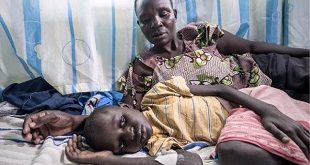
By Michael C. Fairbanks
Many of history’s greatest personalities; Eleanor Roosevelt, George Orwell, Franz Kafka all died of TB
It surprises many people in Europe and North America that tuberculosis (TB) remains one of the great scourges in human history. One out of every three people in the world is infected with latent or sub-clinical TB, and scientists predict that 10% of them will manifest the disease as age and other illnesses compromise their immune systems. In 2015, more than ten million new cases of TB were reported, and almost two million people died from it.
There are three reasons why TB persists: political leaders do not understand the sociology behind it, scientists lack an effective paradigm to attack it, and the rich and famous no longer die from it.
TB once affected every stratum of society, but it now afflicts the most vulnerable populations. This makes it an ideal meme for artists and activists who focus on social justice. The incidence of drug-resistant TB is on the rise, because the health-care systems of poor countries lack the resources to screen for TB and to help patients comply with their therapies.
Six countries – India, Indonesia, China, Nigeria, Pakistan, and South Africa – account for 60% of all reported TB cases. Russia may be willfully underreporting its TB burden, and some African countries do not know how many of their citizens are infected.
Political leaders have failed to understand the sociological factors behind TB. For example, the disease’s prevalence does not usually increase after natural disasters, but it did in Haiti after the 2010 earthquake, owing partly to the policies of the United Nations and USAID. Refugee camps were crowded, the sanitation was poor, children were chronically malnourished, and financial incentives caused many to extend their stay there.
TB afflicts many people who do not vote, such as refugees, prisoners, and the destitute. Prisons and slums also serve as breeding grounds for TB, and young women on the periphery of society can infect their children. The World Health Organisation states that TB-infected mothers are “associated with a six-fold increase in perinatal deaths.”
Mother Teresa worked for decades with TB’s victims in the slums of Calcutta, and observed that, “The biggest disease today is not leprosy or tuberculosis, but rather the feeling of being unwanted.” Discrimination, stigma, and isolation are not just pernicious features of weak societies; they foster conditions that facilitate TB infections and increase the rate of diffusion.
Partners in Health (PIH), which runs TB clinics in South America, the Caribbean, and Africa, may be among those who get it right. Peter Drobac, who ran their programs, told me that PIH trains people in small villages to identify the disease early and to administer treatment properly, as well as to build policy systems that focus on the underlying values of self-determination and compassion, which strengthen any society.
 The Independent Uganda: You get the Truth we Pay the Price
The Independent Uganda: You get the Truth we Pay the Price


